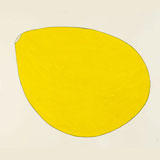
 |
|
 |
|||||||||||||||||
ESSAYS ON TEXTILES & ARTINDIAN TRADE TEXTILES: HISTORICAL EXTRACTS "Some of the earliest examples of Indian trade textiles, from the Dead Sea area and Egypt, have been dated to the ninth and tenth centuries..." "The most convincing proof of the extreme exchange between nations is surely to be found in Southeast Asia, where the region was dominated by Hindu thought and custom in the fifth and sixth century AD...Even today, the legacy of this close contact exists in the customs and traditions in that part of the world." NIM KRUASAENG: Distant Attunements by Pier Luigi Tazzi Each time I find myself in front of Nim Kruasaeng's work, it has the effect of making me feel as if I am in an undefinable state for which, right now, I would use the term dispersion. By which I mean a dispersion of consciousness, of critical self-awareness. Physically I could compare this condition to when drops of oil fall into water: the oil does not mix with it, but more or less lenticular lumps rest on the surface, some dispersing whilst others unite in larger formations, though there is never a proper combining of the two elements. Thus one can say that Nim's shapes float on the surface of our consciousness and create dispersion. ANTIQUE THAI SILK TEXTILES: MAT MI (IKAT) TEXTILES OF ISAN The geographic area called Isan is a plateau region in the northeast of Thailand bordered in the north and east by the Mekong River which marks the international border between Thailand and Lao P.D.R. To the south, the edge of the plateau falls steeply into the plains of Cambodia. With this geographical location it is hardly surprising to find Lao and Cambodian textile styles in the Isan region. With this geographical location it is hardly surprising to find Lao and Cambodian textile styles in the Isan region. The influence from Laos belongs to three main ethnic groups: the Lao Loum, the Phutai and the Tai Phuan while the Cambodian group are known as the Khmer Sung meaning highland Khmer as opposed to the Khmer Tam (lowland Khmer) living in Cambodia today. ANTIQUE INDONESIAN TEXTILES (TIE-DYED LAWON AND PELANGI) Creating patterns on cloth by tie-dying is one of the oldest and most basic of the textile arts. Tie-dying has been used in many islands of the archipelago: Sumatra, Java, Bali, Sulawesi and parts of Kalimantan on a range of textiles, from coarse cottons to fine Chinese Shantung silk. This technique of resist-dying by binding individual areas of cloth to shield them from the dye is usually known in Indonesia as pelangi (also plangi) meaning rainbow; or tritik meaning drips of water. © Copyright |
|||





